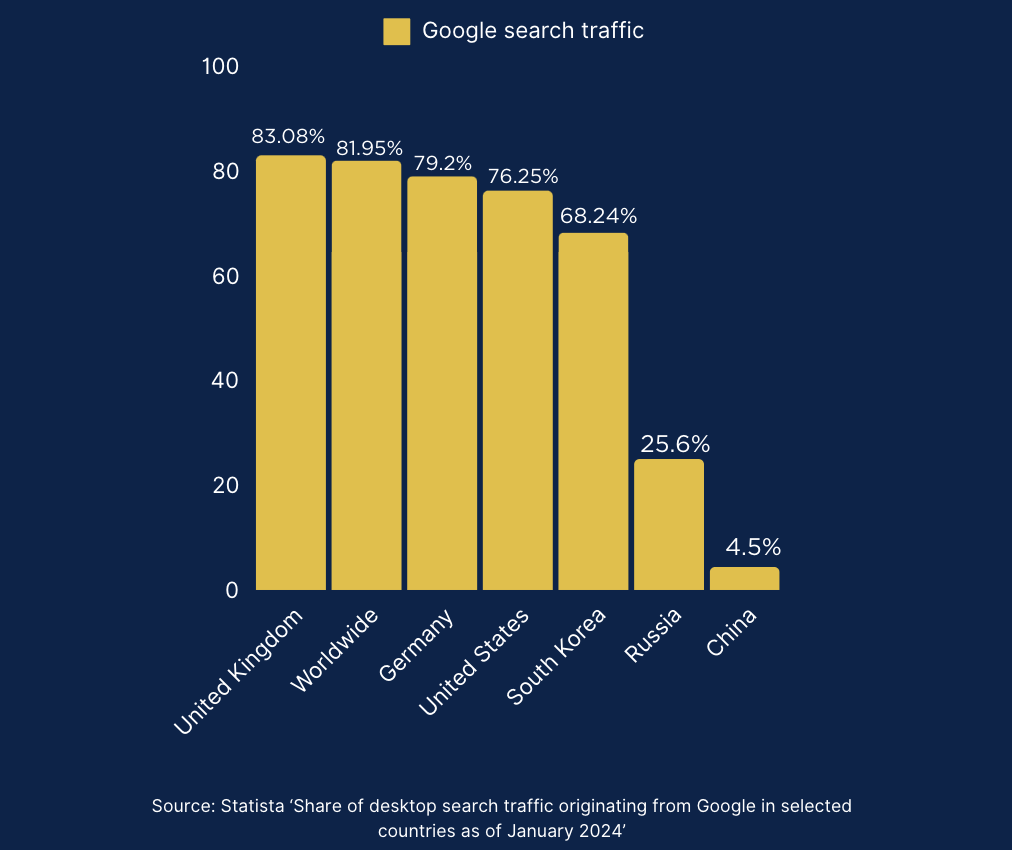Expanding your business to international markets is an exciting opportunity, but success doesn’t come from simply translating your website into multiple languages. To truly connect with audiences across different regions, your site needs to be optimised for local search engines and tailored to cultural nuances that influence how users search for and interact with your content.
Multilingual content plays a critical role in driving this global growth by making sure your website is visible to your required audience and also relevant to users in different regions. Here’s why International SEO is essential and how understanding cultural differences in search behaviour can make or break your strategy.
Beyond translation
When businesses expand internationally, it’s common to focus on translating content to reach new audiences. However, translation alone often fails to capture the nuances of the local language, cultural context, and user intent. Poorly adapted content can lead to lower engagement, reduced search visibility, and ultimately, missed opportunities in global markets.
Multilingual SEO goes beyond simple translation, making sure your content speaks the local language and resonates with local users. By optimising your website for local search engines and adapting content to align with local cultural and linguistic preferences, you increase the chance of ranking higher in search results and connecting more deeply with your target audience.
Understanding how to approach multilingual SEO and avoid common pitfalls is the first step in expanding your global digital presence.
Cultural differences in search behaviour
Cultural, linguistic, and economic factors often influence how people search online. These differences affect the keywords people use and the types of content they engage with. For businesses expanding into new markets, understanding these regional variations in search behaviour is crucial to creating a successful multilingual SEO strategy.
As an example: Users in the US may search for “sneakers” (201,000 monthly searches, 79% competition) and focus on brand and product performance. In the UK, “trainers” is the more common term (90,500 monthly searches, 58% competition), and the search intent might lean towards style and comfort. Meanwhile, in Spain, where price sensitivity is more pronounced, users often search for “zapatillas de deporte” (14,800 monthly searches, 34% competition), with a focus on finding affordable options.

These differences highlight why simply translating content isn’t enough: understanding local search behaviour is key to targeting the right keywords and creating relevant content.
How to align SEO with cultural differences:
Adapting your International SEO strategy for different regions involves more than translation; it requires customising your approach to reflect local user behaviour, preferences, and search intent. Below is a detailed guide on how to align your multilingual SEO efforts with cultural differences.
1. Perform region-specific keyword research
Instead of directly translating keywords, it’s important to do region-specific keyword research. Each market will have its own search volumes, competition levels, and user behaviours that should be factored into your strategy.
- Identify your core keywords based on your primary market (e.g., the US for “best sneakers for running”).
- Use tools like SEMrush, Ahrefs, or Google Keyword Planner to research how those keywords translate across regions. For example, you will find out that “trainers” in the UK have more search volume than “sneakers.”
- Localise keywords by identifying local search terms that reflect how users in each country look for your product.
- Analyse local competitors in each market to see which keywords they rank for so you can find niche opportunities.
- Prioritise high-value regional keywords based on search volume and competition to create region-specific content that targets those terms.
2. Adapt content based on local priorities
Beyond keywords, adapting your content to fit local user intent is crucial. Users in different countries have varying preferences when it comes to the products they search for and the content they engage with. For instance, German users may prioritise technical product specifications, while Italian users might focus on brand reputation and design.
- Research local consumer behaviour to understand the features that matter most in each market.
- Tailor your content’s tone and focus to reflect local user priorities, like technical features in Germany, style in Italy, affordability in Spain, etc.
- Create unique landing pages for each region, highlighting the most relevant aspects of your product or service based on local user expectations.
- Ensure all marketing copy, product descriptions, and supporting content speak directly to the interests of users in each market.
- Continuously refine your content based on local search trends and user feedback to keep it relevant and engaging
3. Incorporate local search engines and platforms
While Google is the dominant search engine in many markets, others like Baidu in China, Naver in Korea, and Yandex in Russia hold significant market share in their regions. For global success, your international SEO strategy must also account for these platforms and their unique ranking algorithms.
- Research the dominant search engines in each of your target markets (e.g., Baidu in China, Naver in Korea).
- Optimise your content for these platforms, which may involve local hosting, language-specific SEO techniques, and mobile optimisation.
- Use tools like SEMrush or Ahrefs to track your rankings on local search engines, making sure to monitor performance across all platforms.
- Adjust your content strategy based on each platform’s ranking factors (e.g., local backlinks and mobile-first indexing for Baidu).
- Regularly audit your site’s performance on local search engines, resolving any technical issues that may affect your rankings.

Practical takeaway:
Multilingual SEO is the foundation for international growth, but success hinges on more than just translation. By understanding and adapting to cultural differences in search behaviour, you can build a strategy that resonates with local users and drives results in every region.
Key actions to take:
- Conduct region-specific keyword research to target the right search terms for each market.
- Adapt your content to align with local user intent and preferences so it speaks to what matters most in each region.
- Optimise for local search engines like Baidu and Naver to reach users in markets where Google isn’t the dominant choice.
By following these steps, you can increase your site’s visibility, relevance, and engagement in global markets, and ultimately drive more leads and conversions.
At Key Content, we help you with everything from auditing to local keyword research and creating tailored local content from scratch that truly resonates with your audience. Get in touch with us today to elevate your multilingual SEO strategy and stay ahead of the competition!



